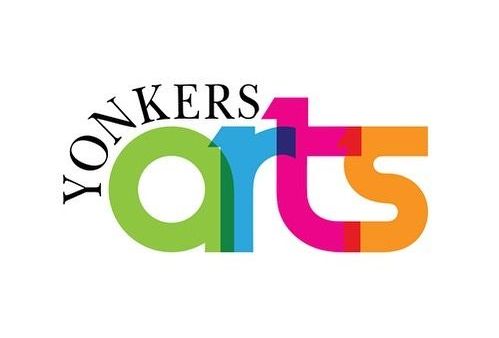Westchester Real Estate, For Art’s Sake
The Westchester Guardian
Westchester County has always considered itself an artistic place, even when it was trying hard to attract business. Now, in addition to creating art, the trend includes creating business through arts centers and spaces for creative artists.
In the last few years, Yonkers has been marketing itself as a magnet for artists and artisans. Perhaps the most notable project has been the creation of the YOHO Artist Studios on Nepperhan Avenue, part of the former Alexander Smith and Sons Carpet Co. The artist lofts there regularly stage open studio weekends to give the artists a chance to showcase their work.
The owner of some adjacent buildings is raising the ante by marketing them to other creative tenants.
R.J. Rose Realty, headquartered at 500 Nepperhan Ave., owns several buildings along the avenue as well as 179 Saw Mill River Road, around the corner. In December the company obtained a $500,000 grant from New York state to create the Carpet Mills Arts District and upgrade street lighting and signage, with the intention of beautifying the neighborhood and attracting business.
“We’re excited. We feel that Yonkers is on the verge of some good things happening. It’s a good opportunity,” said Austin H. Rose, a partner in the company.
He said the company was a tenant until 2007, when it bought 500 and 530 Nepperhan, and has since invested millions of dollars in renovations, including roofing and hundreds of new windows. It is also looking for ways to improve transportation from the Yonkers train station, to make it more attractive to Manhattan prospects.
In addition to the existing tenants, a specific type is being sought, in creative industries such as art, antiques, web design, films, costume designers, colleges and exotic car dealerships. One space with high ceilings has been utilized by film and TV companies, and several projects have been filmed there, including the NBC TV show “The Blacklist.”
The buildings have a long history. The Alexander Smith company was a carpet mill in the 19th century, the various buildings used for manufacturing and the storage of wool. One of its employees was John Masefield, the poet laureate of England from 1930 until his death in 1967, who briefly worked there when he was 19 years old and later wrote the famous poem “Down to the Sea in Ships.”
Rose said the lighting project is still in the planning stage and may face some bureaucratic hurdles, but that “things are in motion.” He said he has been putting together a coalition of 11 other building owners in the area to create even more opportunities. One idea that has been “floated” is an extended daylighting, or uncovering, of the Saw Mill River, such as has been done in the waterfront area near the Yonkers train station and the Riverfront Library. Part of the river is visible as it runs underneath and alongside adjacent buildings.
The company has several ancillary businesses, including the Randolph Rose Collection, which creates custom bronze sculptures, and FEA Home, specializing in Asian creative arts, sculptures and antiques. Its huge warehouses, holding thousands of large and small works, is reminiscent of the vast trove of artifacts in the final scene of “Raiders of the Lost Ark.”
Although the Hudson Valley Center for Contemporary Art is not new, having been established in 2004 by the art collectors Livia and Marc Straus, it seems reborn after a seasonal shutdown since December. An exhibit called “Word,” which incorporates written language as part of multimedia artworks, opened Feb. 27. Among the 45 artists whose works are displayed are the rock musicians John Mellencamp and Robert Indiana, famous for his “Love” print created for the Museum of Modern Art’s 1965 Christmas card, and reproduced as a U.S. Postal Service stamp in 1973.
Sarah Connors, manager of the Peekskill museum, said the only activity during the hiatus was its second annual Live Art Fest on Jan. 31, which allowed the public to come in and see artists create works and engage them in workshops and performances. More than 20 artists and 750 people were in attendance.
Among the artists working that day was Barry Mason of Mount Vernon, a painter, sculptor, photographer and educator at the Horace Mann School in the Bronx, whose work was displayed at the White House in 1979. He was creating canvases and currently has one in the Word show titled “Ancestral Callings #2,” an oil on shaped canvas measuring 8x8 feet.
He said creating at the Live Art Fest was an “awesome experience. There were so many things going on. It was my first time ever being part of a live show. I was a little nervous and didn’t know what to expect, but the energy of the people was just phenomenal.
“Peekskill has a lot of energy. It was an honor to be part of the exhibit, for people to get a chance to come in and learn about you. One day one of those kids may become an artist in their own right,” he said.
One of the county’s most interesting arts-related projects is the former Yonkers City Jail, at 24-26 Alexander St., a virtual case study in adaptive reuse. Daniel Wolf, a Manhattan art dealer and collector, purchased the 87-year-old, 10,000-square-foot building for $1 million in 2013 and has been renovating it for his personal use. The building will hold his collection of paintings, sculpture, antiques and photographs from all over the world.
A look inside the building recently revealed much renovation yet to be done, and traces of its history still visible, including bars on the windows. Wolf said, however, that he is in the process of moving in.
It has been reported that the building will contain exhibit space to be used by other artists. Wolf said that was not correct, that the building will be for his personal use. “There’s not a lot of space that’s not storage,” but he will keep one room for occasional private receptions, he said.
He also corrected misreporting that his wife, the artist and sculptor Maya Lin, who designed the Vietnam Veterans Memorial in Washington, D.C., and a bakery for the Greyston Foundation in Yonkers, was contributing to the redesign. “There’s no design element to it,” Wolf said. “We’re fixing what was broken and taking out the cells. It will be the same building without the cells. It’s an amazingly wonderful building, the structure, the size of the rooms. The outside looks like a library or a museum, not a jail. It represents a moment in American urban history. Even as a jail it had so much attention to the architecture. We don’t think of jails now as architectural monuments. They’re just gray blocks, but this was beautifully built 80 years ago.”
He added that he thought it was “wonderful” to live just 30 minutes away, in Manhattan. “It’s just a joy to work in Yonkers,” he said. Photos by Joseph P. Griffith







